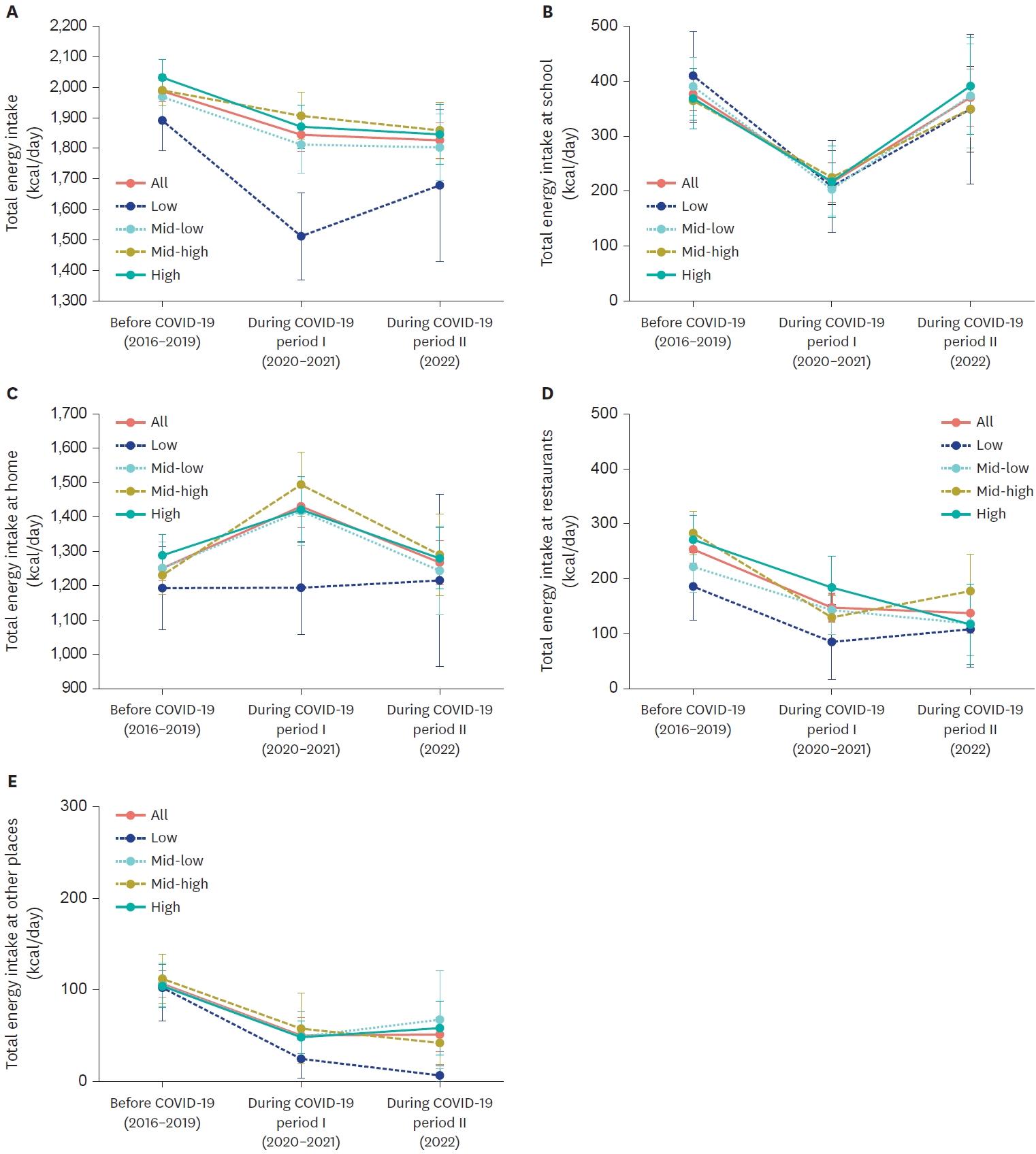- [Korean]
-
Intake of energy and macronutrients according to household income among elementary, middle, and high school students before and during the COVID-19 pandemic: a cross-sectional study
-
Chae-Eun Jeong, Heejin Lee, Jung Eun Lee
-
Korean J Community Nutr 2024;29(3):234-252. Published online June 30, 2024
-
DOI: https://doi.org/10.5720/kjcn.2024.29.3.234
-
-
 Abstract Abstract
 PDF PDF PubReader PubReader ePub ePub
- Objectives
This study examined the intake of energy and macronutrients among elementary, middle, and high school students according to household income before the COVID-19 pandemic (2016–2019), during the social distancing period (2020–2021), and after the social distancing measures were lifted (2022).
Methods
We included 5,217 students aged 5–18 from the Korea National Health and Nutrition Examination Survey (KNHANES) conducted between 2016 and 2022. Dietary intake was assessed using one-day 24-hour dietary recalls. We estimated the least squares means (LS-means) of intake according to household income for each period using a weighted linear regression model, adjusted for age and sex. Differences in LS-means between the periods were analyzed using the t-test.
Results
During the social distancing period, the LS-means of energy intake among students decreased significantly by 143.2 kcal/day compared to pre-pandemic levels (P < 0.001). Students from low-income households experienced a more pronounced decrease in energy intake (−379.1 kcal/day, P < 0.001) and macronutrient intake compared to those from other income groups. Energy intake at school significantly declined for all income groups during the social distancing period compared to before the pandemic. No significant changes in home energy intake were observed among low-income students, whereas there was an increase for students from higher-income groups. Before the pandemic, 8.5% of students from low-income households reported insufficient food due to economic difficulties; this figure rose to 21.3% during the pandemic.
Conclusions
During the pandemic, students from low-income families experienced significantly lower intake of energy and macronutrients compared to pre-pandemic levels. The most substantial reductions were noted among low-income students, largely due to the lack of compensation for decreased school-based intake with increased intake at home.
-
Citations
Citations to this article as recorded by  - How Did the Dietary Behavior of Older Korean Adults Change During the COVID-19 Pandemic?
Yong-Seok Kwon, Dasol Kim, Hee-Sook Lim
Nutrients.2025; 17(12): 1973. CrossRef - Dietary Assessment of Older Korean Adults by Level of Plant Protein Intake
Yong-Seok Kwon, Ye-Jun Kim, Jeong-Hun Song, Yangsuk Kim
Nutrients.2025; 17(12): 1976. CrossRef - Changes in Ultra-Processed Food Consumption among Adolescents before and after the COVID-19 Pandemic : Using Data from the 7th (2018~2019) and 8th (2020~2021) Korea National Health and Nutrition Examination Survey
Hyun-Jin Hwang, Yoo Kyeong Kim
Korean Journal of Human Ecology.2024; 33(6): 981. CrossRef
-
1,711
View
-
99
Download
-
3
Crossref
|




